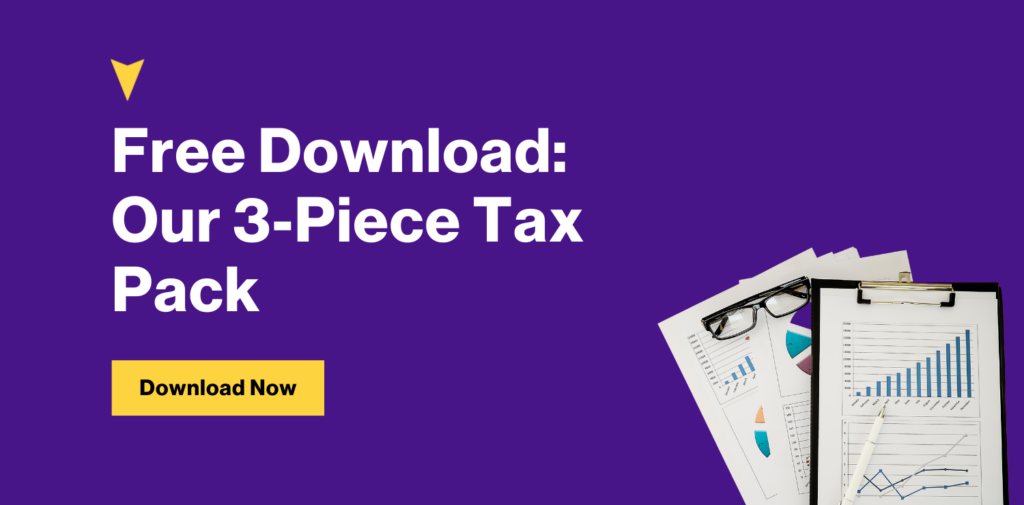Schedule K-1 tax forms are essential to filing taxes when your business is organized as a partnership.
Rather than income passing through to a single person, as with an LLC or sole proprietorship, partnership income has to be distributed among multiple people; the K-1 is how partnerships report this to the IRS.
In this article, we’ll guide you through the most critical tax and filing considerations to help you avoid penalties and keep you compliant with the IRS.
Table of Contents
What Is a K-1 Tax Form?
The Schedule K-1 reports income, deductions, and credits from partnerships. Its purpose is to communicate the proportion of income or loss attributable to each partner so they can file their personal income taxes accurately. It’s issued annually for informational purposes only; no money is due when a partnership files a K-1.
Click here for a blank copy of the most recent K-1 tax form.

How Is K-1 Income Taxed?
Partnerships and S Corporations are pass-through entities; they don’t pay tax directly. Instead, the business income flows through to the partners or shareholders, who then file and pay tax as individual income.
Remember that owners are taxed on partnership profits, even if the income isn’t distributed.
How Does a K-1 Loss Affect Your Taxes?
Suppose your business is operating at a loss, and there’s no taxable income to report. In that case, the entity is still responsible for filing K-1s with the IRS and issuing this information to shareholders.
From here, individuals can use their proportion of the loss to offset their taxable income up to a limit. Losses that exceed their basis (the net of how much money they’ve invested or received as a distribution) in a given year can reduce tax liability in future years by being taken as a net operating loss carry-forward.
Who Files the Schedule K-1?
It can be hard to keep track of who must file which forms in a partnership, so here’s a breakdown:
- General partnerships, limited partnerships, multi-member LLCs, S-Corporations, and some multi-beneficiary trusts and estates are responsible for K-1 tax forms.
- The legal entity, not the partners themselves, file a Schedule K-1 with the IRS as an addendum to their regular tax forms.
- In addition to filing, the entity issues copies of the K-1 to its partners.
- Partners or their tax preparers transfer information from the K-1 to individual tax returns.
Types of K-1s
You may attach your K-1 to a different income tax form, depending on the legal entity.
- Partnerships use form 1065.
- S corporations use form 1120S.
- Trusts and estates use Form 1041.
K-1 Tax Form Deadline – When is the K-1 due?
The K-1 deadline is the same as regular tax due dates: March 15th for S-corps or LLCs and April 15th for trusts and estates. To give shareholders time to prepare their tax returns, copies of K-1s must also be issued to partners on this day.
If a partnership applies for a tax extension to avoid the penalty for filing taxes late, the extended deadline for trusts and estates is September 15th or October 15th. Since their K-1 information won’t be accurate, partners or beneficiaries should also apply for tax extensions.
Unfortunately, partnerships are notorious for issuing K-1s to their partners late. If you’re a partner preparing your taxes without one, use your best estimate and amend later if necessary.

Consequences of Not Filing K-1 Tax Forms
The IRS doesn’t expect individuals to file a K-1. However, they will compare your tax return to the information filed by your partnership.
Partnerships that don’t meet their Schedule K-1 responsibilities can also face expensive filing penalties.
- First, if a pass-through business is late to file its taxes, they are fined $235 per partner per month, even if the company isn’t profitable.1 For example, if an S Corp has five shareholders, they’ll owe a monthly late-file penalty of $1,175.
- Secondly, a penalty of $310 may be imposed for each inaccurate K-1 filed with the IRS or each failure to issue a K-1 copy to a shareholder.
These fines can pressure small businesses to file on time and accurately. If you’d like to rest easy knowing your taxes have been prepared correctly, contact an indinero business tax services specialist today for a consultation.
Schedule K-1 Instructions
If you’re filing taxes on behalf of the partnership, a separate K-1 should be filled out for each partner and attached to your entity’s unique tax form (listed above). For individuals, transfer the information your partnership provides to your individual income tax return.
A Schedule K-1 has three sections:
- Issuing Entity Information: Biographical information, including employer ID number, address, and IRS filing location.
- Partner or Shareholder Information: This section requests tax ID numbers, names, and addresses for K-1 Recipients.
- Partner’s Share of Income or Loss: In-depth details of the recipient’s share of the partnership, profit or loss, interest, dividends, and capital gains.
Conclusion
Partnerships, S corporations, estates, and trusts use the Schedule K-1 Tax Form to declare the income beneficiaries, partners, and shareholders receive. Legal entities must file a K-1 for each partner and attach it to their regular income tax reporting form, while individuals don’t need to include a K-1 with their tax returns.
For help with K-1 filing and other detail-oriented tax matters, contact an indinero business tax services team member. Over 50% of indinero clients save money on taxes by filing through us, so you can rest assured that you’re in good hands.
For more Accounting FAQs visit our FAQ page




